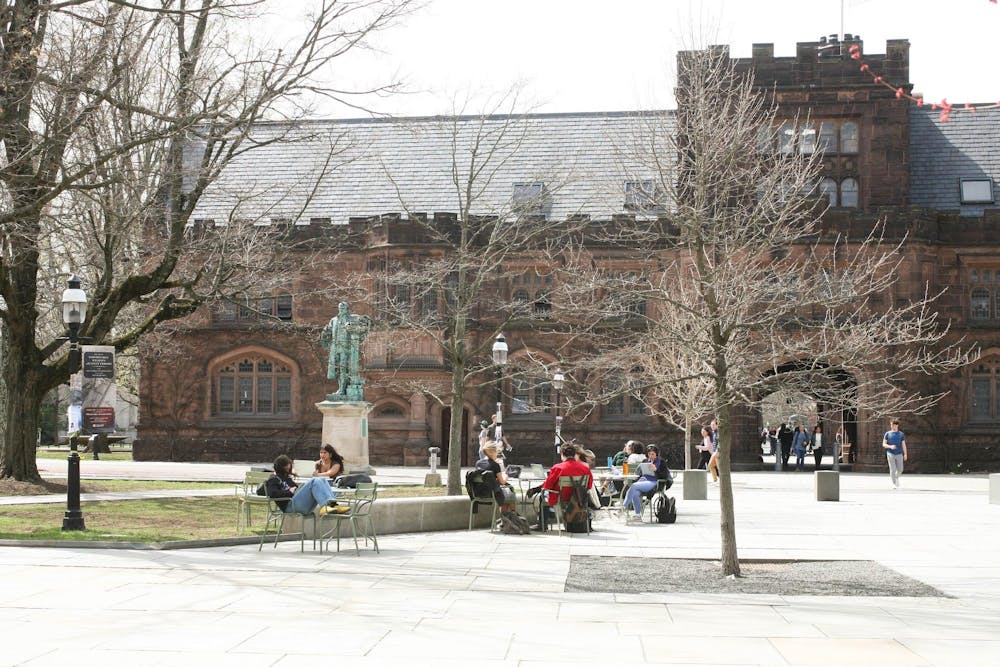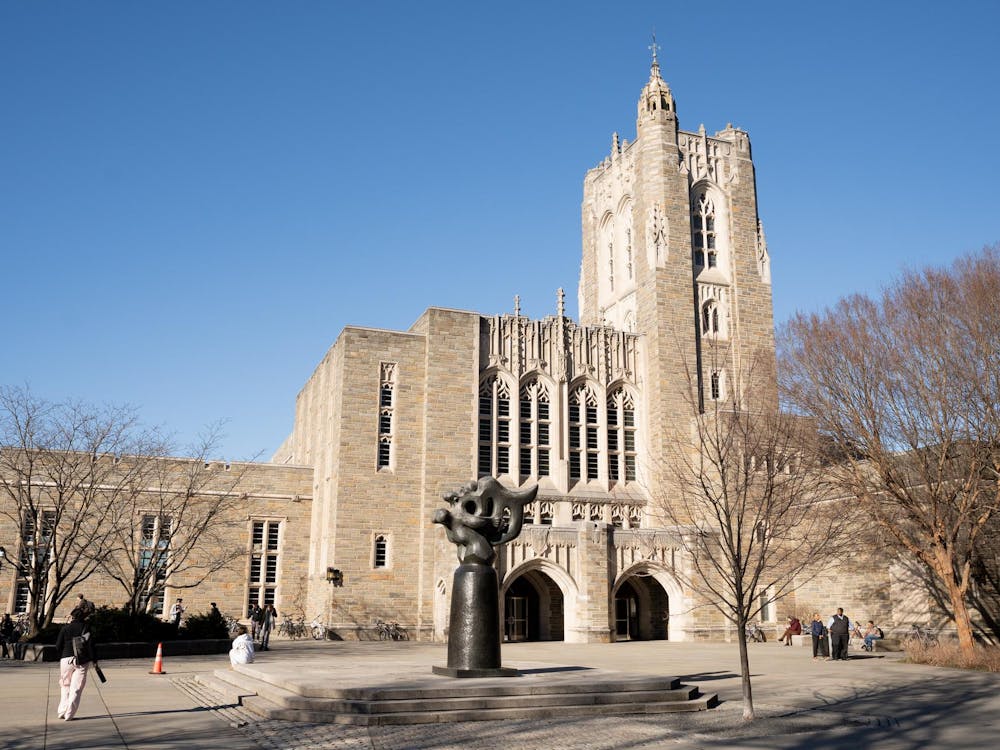Tuesday’s first day of class brought new passing times: Students had 15 or 20 minutes to travel between classes, instead of last year’s 10 minutes. Here, our Opinion writers comment on the new class schedule, our expanding campus, and what these changes mean for daily student life and for the University.
New class times won’t fix the problem, but better transit could
Isaac Barsoum, Columnist
Princeton said they were extending passing periods so that students could arrive to class on time despite campus expansions. While better than the status quo, this change will fail to achieve that goal — but there are real ways to solve this problem. More robust transit could be one of them.
According to analysis by The Daily Princetonian, 59 classes in the Fall 2025 semester will end at 10:25 a.m., and 150 will begin just 15 minutes later. While having 15 minutes to walk to class will make some class pairings across these time blocks more feasible, some remain out of reach.
For example, a student taking COS 418: Distributed Systems, which ends at 10:25 a.m. on Wednesday and has in the past been held in the Computer Science Building (near the Friend Center), would be hard-pressed to reach the Effron Music Building (near Princeton Station) by 10:40 a.m. for MUS 204: Musical Instruments, Sound, Perception, and Creativity. Walking the 0.8-mile distance takes 17 minutes, getting the student to class at least two minutes late.
TigerTransit buses are even less efficient at crossing campus. While the walk from the Computer Science Building to Effron could get you there at 10:42 a.m., the fastest bus trip would arrive a minute later — and still requires 13 minutes of walking.
This problem is bigger than just individual students’ tardiness. It exposes a fundamental geographic segregation of academic disciplines at Princeton in a way that is antithetical to the liberal arts. STEM classes, students, and professors are far away from their music (and other humanities) counterparts. But given that arts and sciences education and research are mutually beneficial, arts and engineering should be better connected on our campus.
This problem can be fixed with better, more frequent, and more express University transit. TigerTransit is unusable now, but it doesn’t have to be that way. An express line that runs directly from McCosh Walk to Princeton Station every two minutes with no stops in between during class changes might help fix the connection problem, and thus the integration problem, because students could move much more easily across campus.
It’s time Princeton made TigerTransit worth using for undergraduates. Doing so could finally connect and integrate the rapidly expanding campus.
Isaac Barsoum is a sophomore intended Politics major from Charlotte, N.C. You can reach him at itbarsoum[at]princeton.edu.

If passing times are changing, change class lengths, too
Jerry Zhu, Guest Opinion Editor
No one can deny that the new class times look … well … weird. “Sorry, gotta run, I need to make my 2:55 lecture!”
What?
Though some of the class times are now an eyesore, the new scheduling grid for Fall 2025 is a step in the right direction. The extra five minutes of passing time are a lifesaver for students with cross-campus treks between consecutive classes.
But then, the question must be asked: Why keep the same class lengths? If passing times are no longer 10 minutes, it makes less sense that the class blocks remain 50, 80, or 170 minutes. The University may as well either shorten these classes by five minutes or lengthen them by 10 so that classes can still start on the quarter-hours. Though these class lengths made sense under the 10 minute passing time regime, the class lengths now exacerbate the new schedule’s confusion.
To add confusion, afternoon seminars can now start at either 1:20 or 1:30 p.m. depending on “pedagogical and curricular needs,” while lectures must start at 1:20. The result, for my schedule at least, is an unappealing mix of 1:20 and 1:30 start times. Though not a hugely impactful choice, it is a mystifying one.
It’s good that the University is listening to student feedback. But it would also help to take a step back and think about the big picture, too.
Guest Opinion Editor Jerry Zhu is a junior majoring in Economics. He may be reached at jfz[at]princeton.edu.
This is what success looks like
Anna Ferris, Contributing Opinion Writer
The actual change in class times is trivial. Students now get an extra five minutes between class, one way or the other. The reasoning behind this extra time is what’s really worth discussing: people need more time to get to class because our campus is getting bigger. This is great news — it shows that our academic departments and student body are ever-expanding, and that the administration is responsive to students’ needs arising from campus growth.
Campus used to be quite a bit smaller — The Dinky, for example, once stopped where Blair Arch is today, and the station has been consistently pushed back toward its current position as the University expanded south.
New buildings need to be placed somewhere, which unavoidably makes campus larger. It makes sense that passing periods would eventually also expand to accommodate the further walks.
If you aren’t growing, you’re dying. It sounds bleak, but many peer institutions are building out just as quickly as we are. We are all fellows in the quest for learning, of course, but we also compete for talent. The more buildings we erect, the more specialization and range in fields we can offer. The new engineering buildings, for example, will house scientists on the cutting edge of quantum science. This opens opportunities to welcome new groups of scholars to Princeton, which is good for the University any way you spin it.
I’ll be the first to complain about the architecture we choose for these brand new institutions. Ultimately, though, growth beats stagnation any day. New passing periods are a small sign that the University is living up to the enormous promise of “Dei sub numine viget.” And for my part, I’m pleased to have an extra five minutes to walk.
As a next step, I suggest Princeton purchase the entire state of New Jersey. Think of how many post-Soviet brutalist rectangles we could build!
Anna Ferris is a contributing Opinion writer and a senior in the English department. She may be reached at annaferris[at]princeton.edu.
Let me sleep, please!
Charlie Yale, Assistant Opinion Editor
College lends itself to late bedtimes. Between classes, meals, extracurricular activities, and socializing with friends, I often find myself not being able to start on the next day’s coursework until well after midnight.
This semester, according to the Registrar’s course offerings page, Princeton is offering 1,628 courses. In fall of 2024, the University offered 1,625. But, as a part of the University’s scheduling overhaul, number of classes starting during the 9 o’clock hour (either at 9 a.m. sharp or at 9:35 a.m.) increased from 153 in the fall of 2024 to 242 next semester, a more than 50 percent jump.
Not only have the number of classes starting within the 9 a.m. hour increased, but there is simply a higher chance that a class will end up during that time period — 15 percent of classes next semester will start within the 9 a.m. hour, up from 9 percent last fall. This is almost certainly a result of the University removing the 10 a.m. slot for courses to begin.
For my fellow night owls, this is terrible news: We know that 9:35 feels more than 25 minutes earlier than 10. While a diversity of class times supposedly reduces the likelihood of conflicting schedules, I, like many of my fellow students, also want to get my beauty sleep.
Princeton: Bring back the 10:00 a.m., please!
Charlie Yale is an assistant Opinion editor from Omaha, Neb. who is not excited about having to wake up for a 9:00 a.m. class this semester. He can be reached at cyale[at]princeton.edu (but probably won’t check his inbox until after 10:00).








